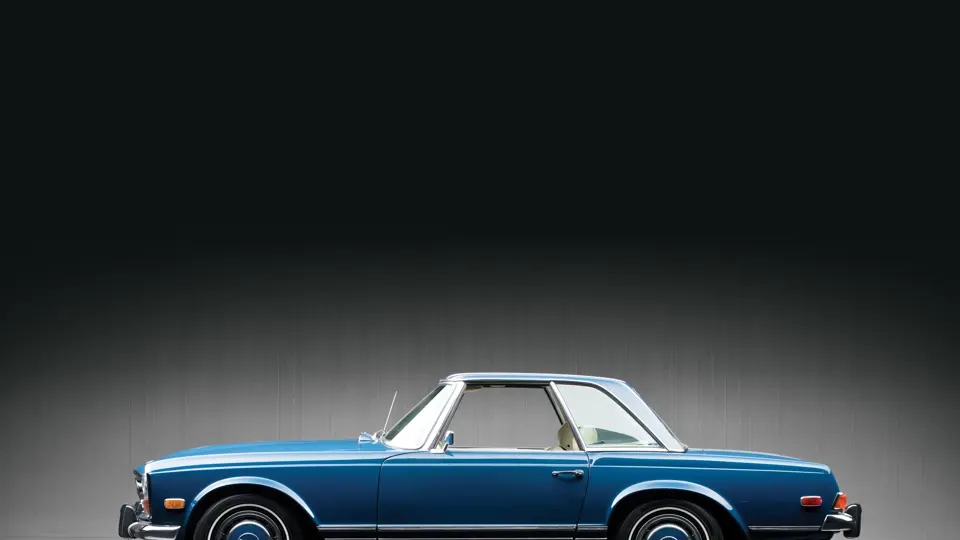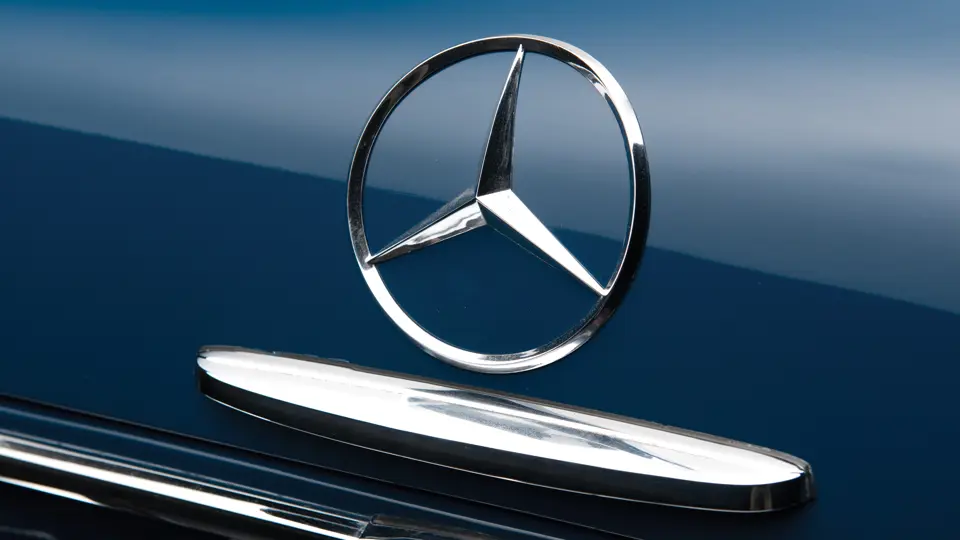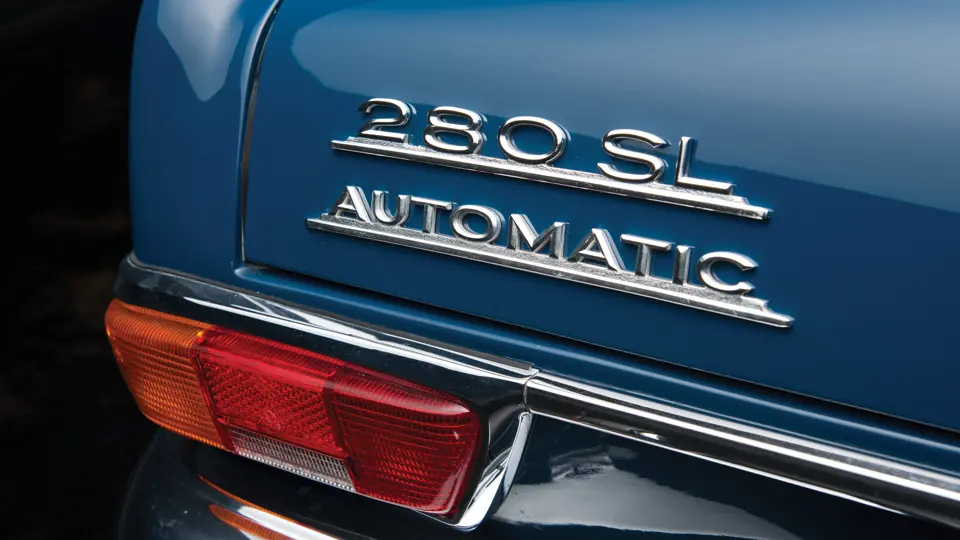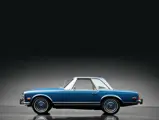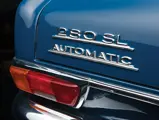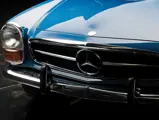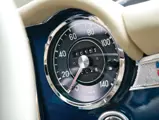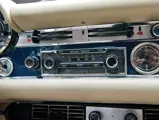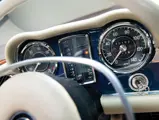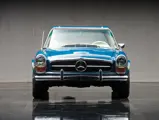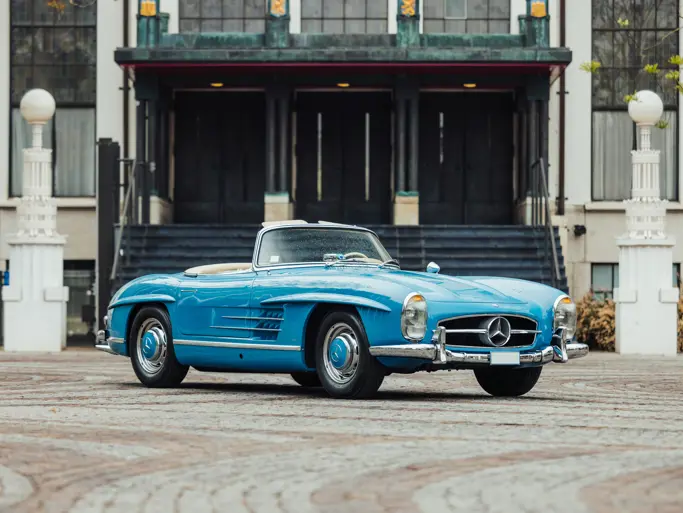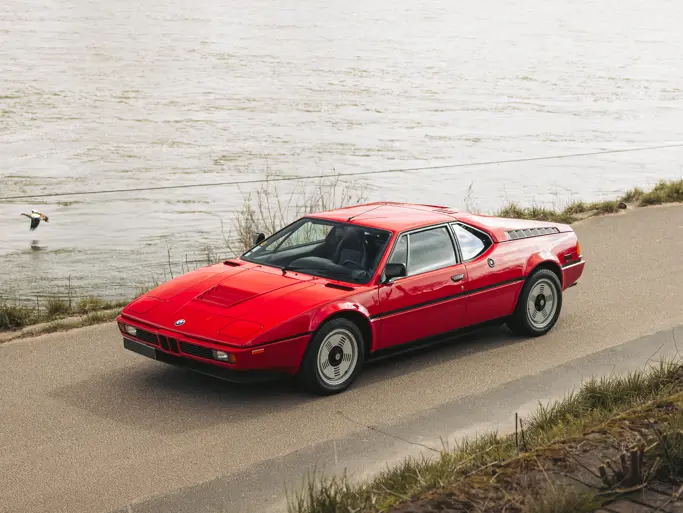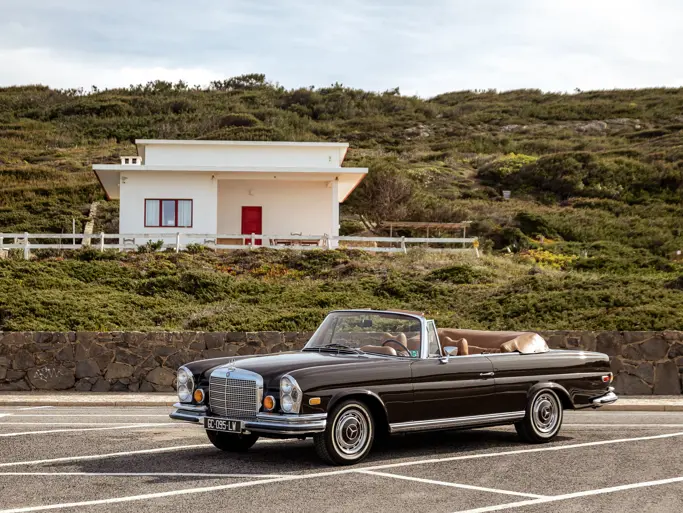180 bhp, 2,778 cc overhead-cam inline six-cylinder engine with Bosch fuel-injection, four-speed automatic transmission, independent front suspension with coil springs and unequal A-arms, independent rear suspension with low-pivot swing axles, trailing arms, and coil springs, and four-wheel hydraulic disc brakes. Wheelbase: 94.5 in.
Every decade has its style icons. The 1960s brought us go-go boots, bouffant hairdos, and kipper ties, none of which have aged nearly as well as the Mercedes-Benz W113 series of two-seat roadsters. The W113 was the original “car as accessory.” It was expensive and impractical enough to demonstrate one’s wealth, but it was small and zippy enough for easy motoring through city traffic. It was sporty enough to be fast and fun to drive, and it was also comfortable enough to be luxurious. The W113 was always appropriate for any occasion, and anyone looked good in it.
The original W113 design was the 230SL, introduced in 1963 with the crisp, angular Paul Bracq styling and “Pagoda” removable hardtop, which would become the model’s signatures. The original 150-horsepower six-cylinder grew in size over the decade, with the ultimate model being the 280SL with the 180-horsepower, 2.8-liter engine, introduced in 1968 and built through 1971. The 280SL was the most popular W113, accounting for 23,885 cars.
As one expects from a car in this collection, this particular 280SL ticks all of the boxes. Set up for luxury, it is finished in the rarely seen and elegant hue of Medium Blue, as original, with a lovely, crisp beige interior, and it is equipped with a floor-shifted automatic transmission, power steering, air conditioning, an outside rearview mirror, front and rear bumper guards, a desirable Becker Mexico radio/cassette player, and tinted glass. Naturally, it has both a soft top and the famous removable “Pagoda” top with optional trim strips. Notably, the car is supplied with extensive records of service over its lifetime.
Then, as now, a 280SL is always in style.




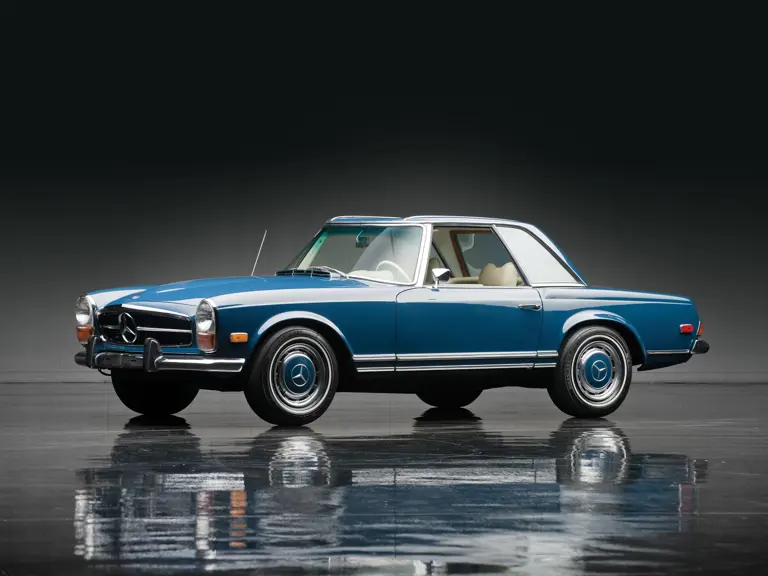
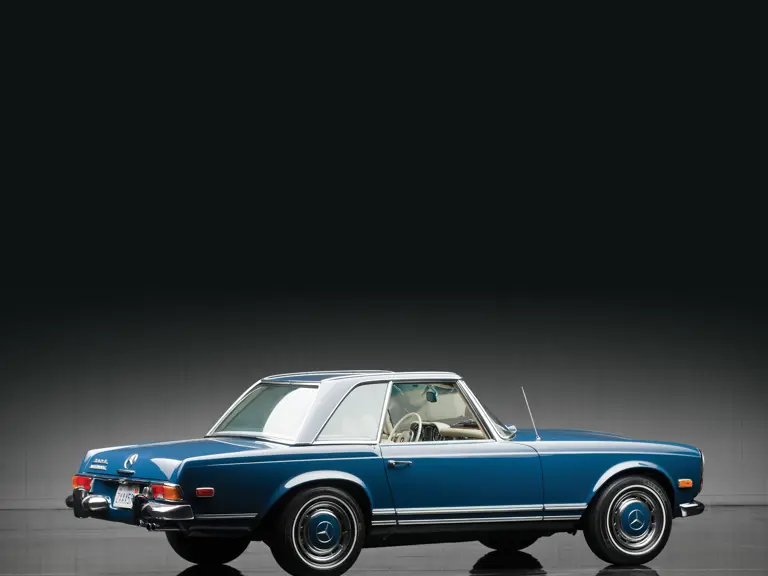
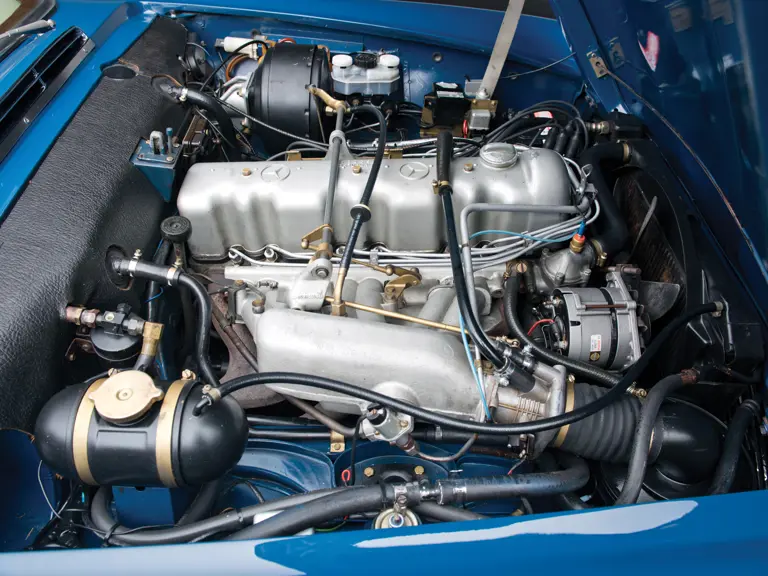

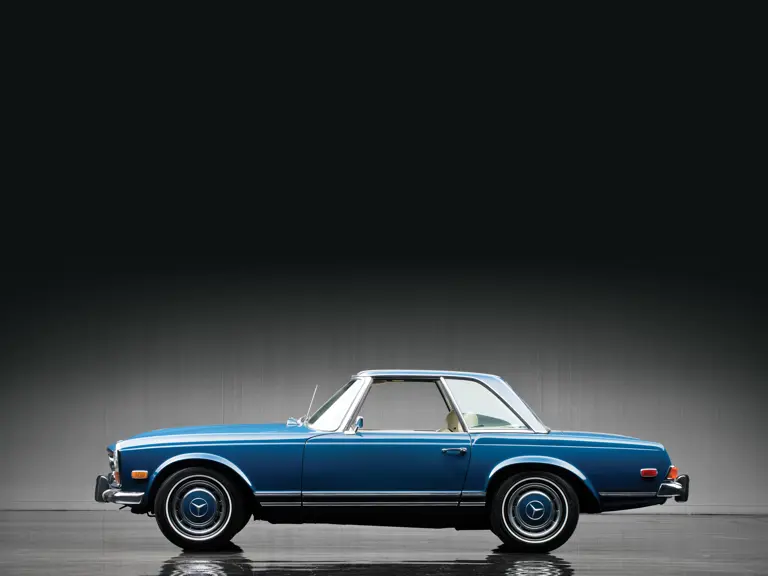
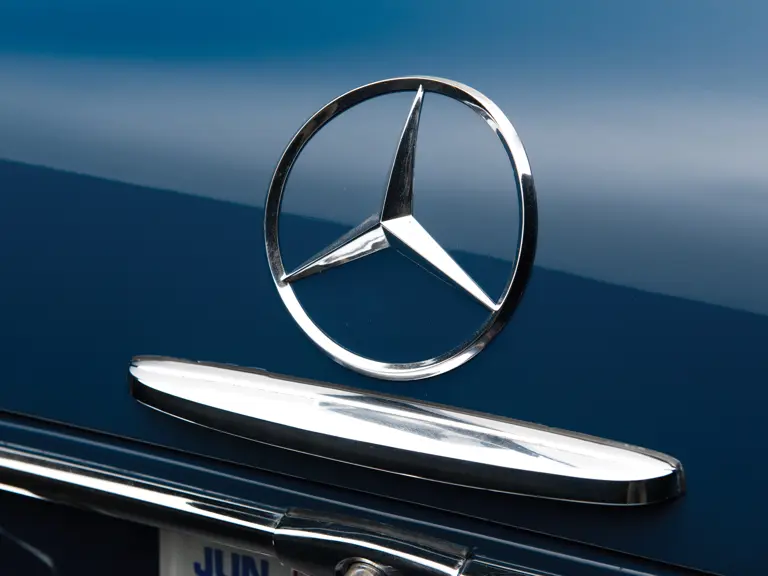
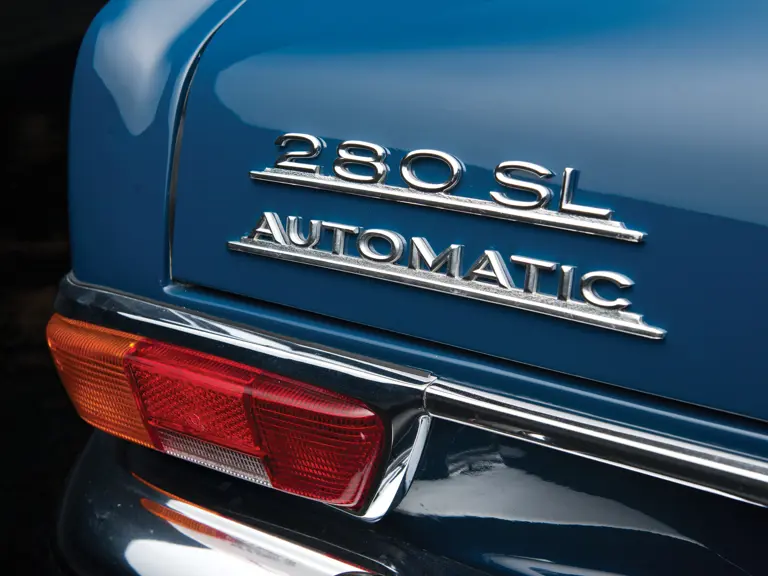
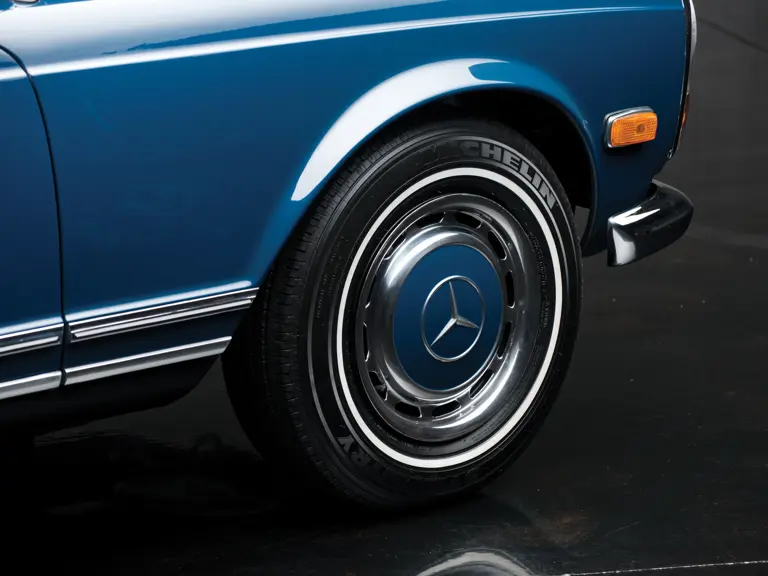

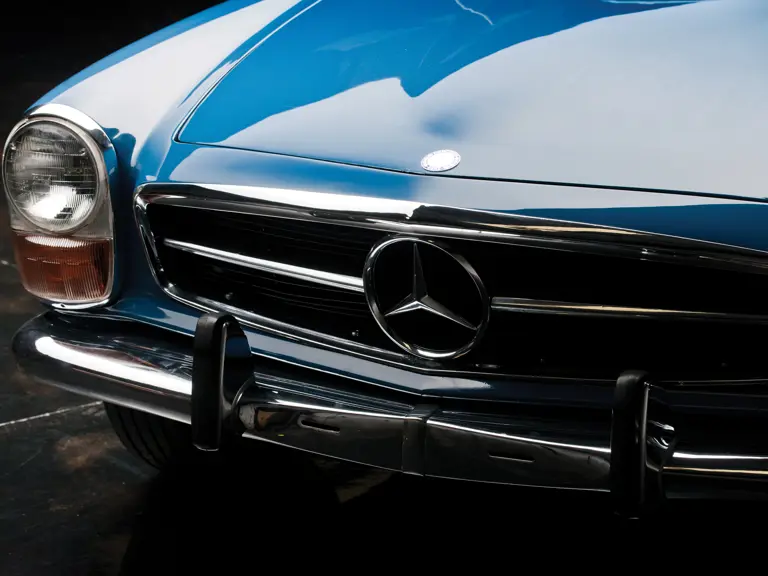
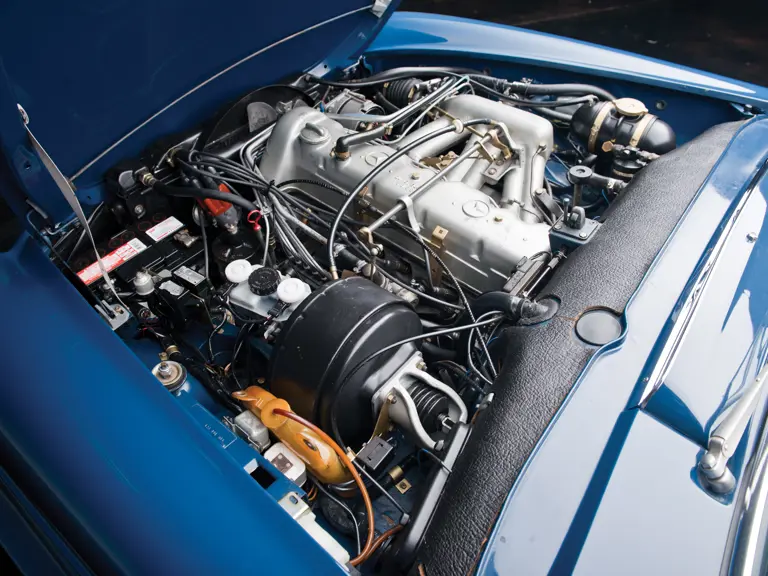

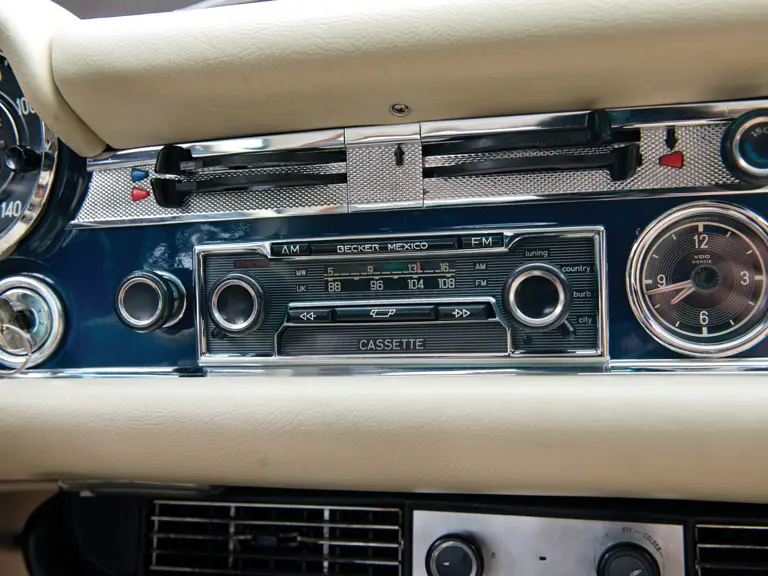
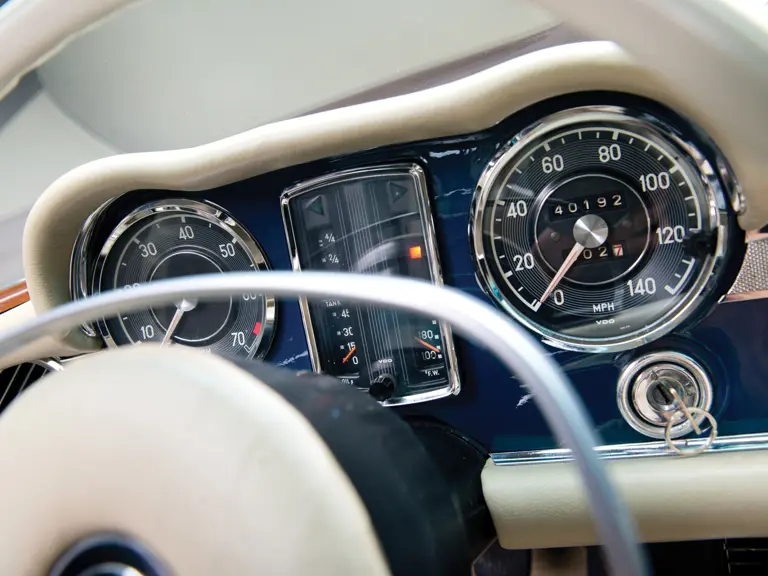
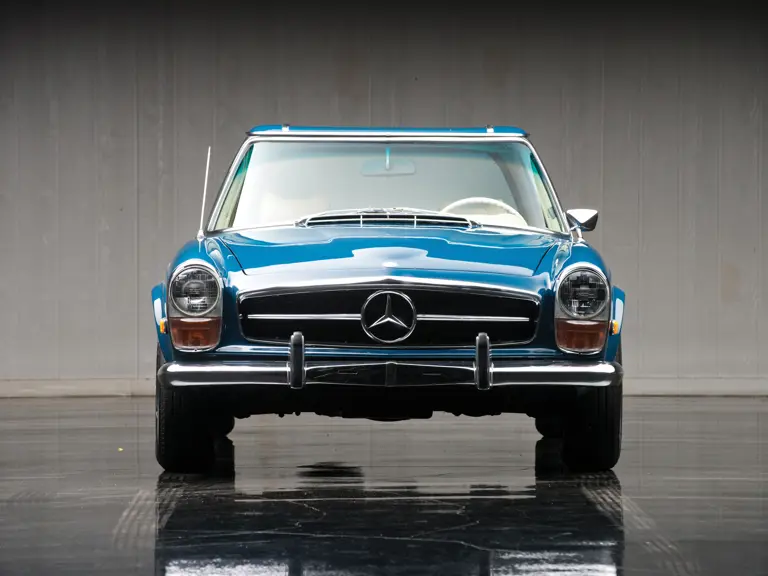
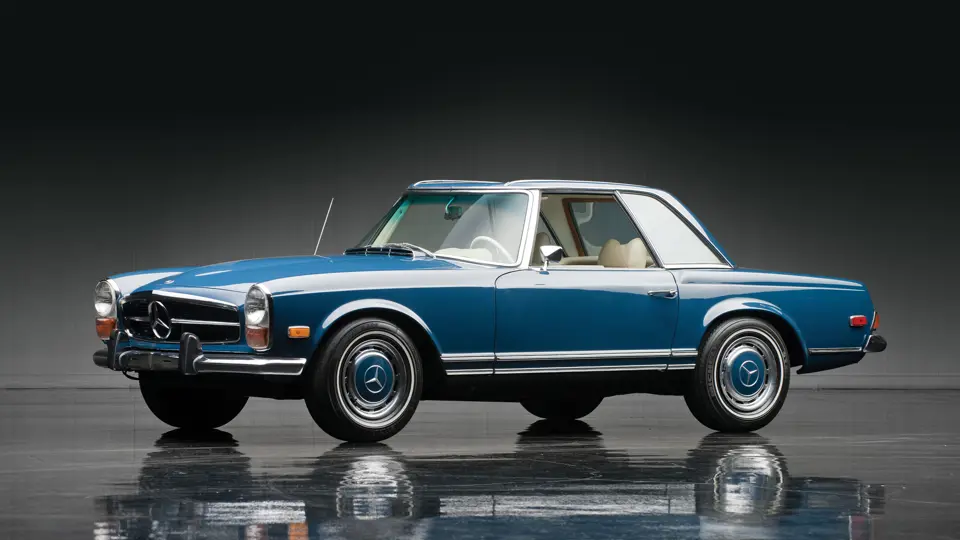
 | Fort Worth, Texas
| Fort Worth, Texas
